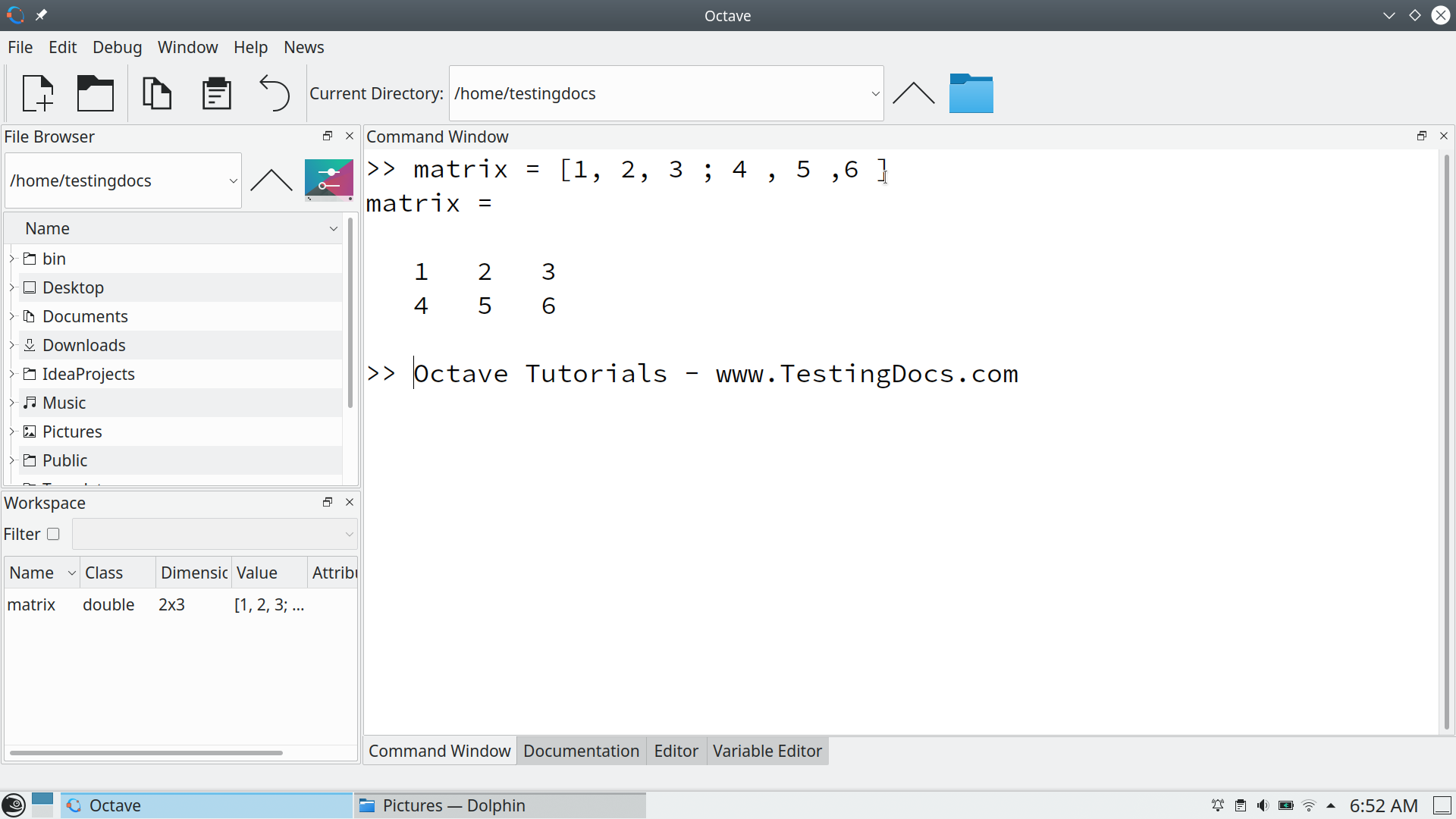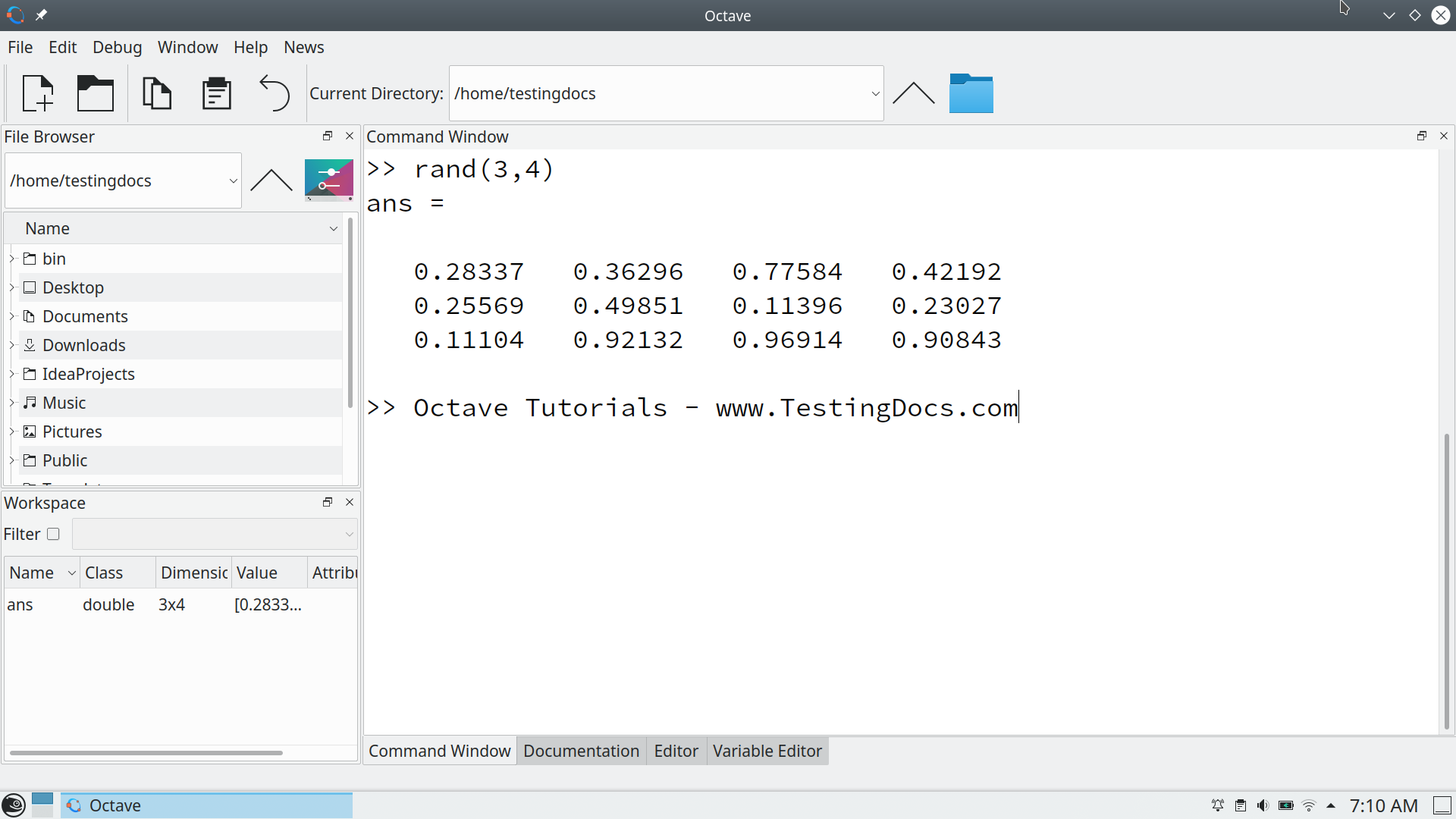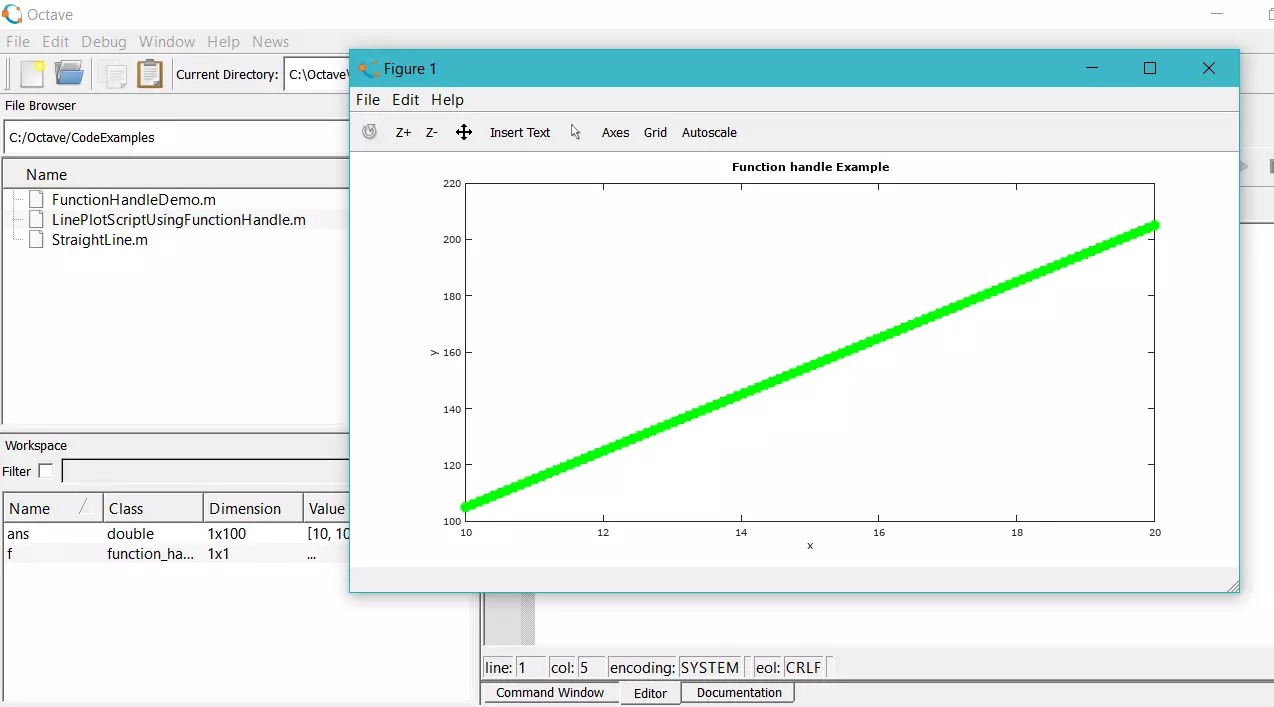Create a New Matrix using Octave
Create a New Matrix
In this tutorial, we will learn how to Create a New Matrix using GNU Octave. We can create a new matrix or vector with square brackets. We can specify the matrix elements between []. We can use a comma or a space to separate entries in a row and a semicolon( ; ) or carriage return to separate the rows.
We can store the matrix in a variable to refer to it later in the script.
Example
To create a new matrix with 2 rows and 3 columns.

We can end the command with a semicolon(;) to tell Octave not to print the result of the command or the variable.
In-built Functions
Octave also provides some in-built functions to create vectors. The rand(row, column) function creates a matrix with random values.
For example, to create a matric with 3 rows and 4 columns with random elements, we can use the following command:
>> rand(3,4)
By default, each element in the matrix will be set to a value between 0 and 1.

The other most used functions to create matrices are:
- zeros
- ones
For example, the function zeros(2) creates a matrix with all elements as zero with two rows and two columns.
>> a = zeros(2)
a =
0 0
0 0
The function ones(2) creates a matrix with all elements as one with two rows and two columns.
—
Octave Tutorials
GNU Octave Tutorials on this website can be found at:
https://www.testingdocs.com/octave-tutorial/
For more information on Octave, visit the official website:







